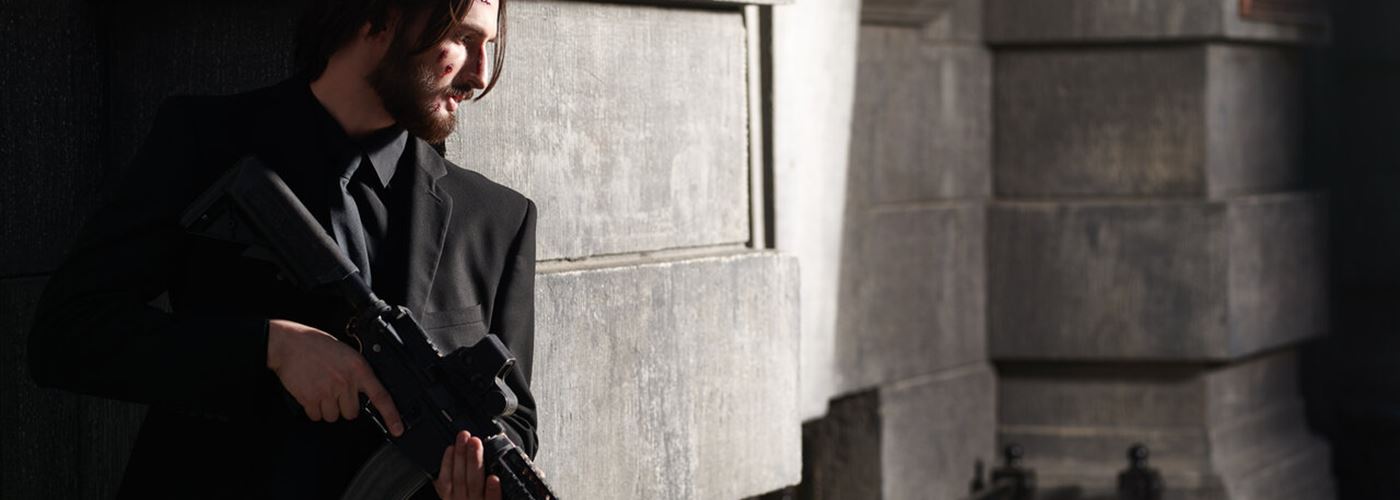
As I have grown older and perhaps a little wiser, I have found it more and more difficult to enjoy the endless stream of movies and television shows featuring gunfights and armed encounters. In their endless attempts to create interesting and emotionally charged storylines, Hollywood inaccuracies in gunfights have elevated armed encounters to a level of stupidity and absurdity that destroys the credibility of the film/show for all reasonably informed and intelligent audience members. As you might imagine, my wife does not find me to be good company when watching such films/shows.
If uninformed people watch these scenarios and believe that they have any relevance to reality, then these individuals may engage in some dangerous behaviors in the real world. I do not expect the everyday citizen to truly understand the nature of an armed conflict. However, when citizens are constantly exposed to misrepresentations of gun safety and usage, they may start believing in tactics and practices that could have deadly consequences.
The purpose of this blog is to simply point out some of the most common mistakes and to explain why they are problematic. Without identifying every film and television show, I am sure that the reader will recognize many, if not all, of the scenarios discussed and explained.
This series is comprised of 4 individual blogs addressing the central theme that Hollywood's portrayal of gunfights is grossly inaccurate. Understanding What Hollywood Gets Wrong… may save your life!
Tactics
1. Hostage Negotiation Tactics: “Put your gun down, or I will shoot her/him!”
I am sure that you recognize this line from numerous high-tension hostage scenes where the antagonist threatens to shoot an impromptu hostage unless the protagonist lays his weapon down. And of course, the good guy acquiesces to the demand and lays his weapon down. Now, the antagonist is the only one with a gun. For some unknown reason, the protagonist somehow gets out of the situation alive.
Problem: The problem is obvious. Now, the antagonist can kill everyone, including the protagonist that put his gun down. There are lots of other options other than putting the gun down. In the film “Taken” (Caution: spoiler alert), the father character, played by Liam Neeson, demonstrates how to handle such an encounter effectively. If you are in the same room with the antagonist, regardless of the hostage, you should be able to incapacitate the antagonist by putting a bullet through his head. If he can see you, then you have a direct line of sight with his eye. If you lack the skill and will to do this, then another option would be to back out and find some cover and call for backup. Giving up a firearm under such critical circumstances would be the last thing anyone would want to do.
2. Gunfight Dynamics: “Standoffs”
The term ‘Mexican standoff’ is commonly used to describe an encounter when two or more people are simultaneously pointing guns at one another, but no one shoots. And typically, the adversaries are standing out in the open with no concealment or cover. It is as if each one is thinking, “If you shoot me, then I will shoot you.”
Problems: In reality, gunfights start and end quickly. The first one to hit their target typically wins, and the one who hesitates or doesn’t fire is either injured and/or dead. In more than 37 years of policing, I never witnessed or even heard of a standoff between adversaries. The reality is typically “I have to kill you before you kill me.” There is no negotiating or hesitation.
One reality of armed encounters is that action is faster than reaction. This means for anyone to react to another person, they must see what is happening, assess it, determine how to respond, and respond to it. Even if one knows what is going to happen and they already have their mind made up how to respond, there is still a delay in their response time.
The typical bullet travels a minimum of 1,000 feet per second (many with much higher velocities). However, the point is that when one person shoots at another person, the bullet is going to strike the target in a small fraction of a second. The idea that “if you shoot me, then I will shoot you” is ludicrous. By the time you would be able to react, a bullet will have torn through your body/head at such a speed and impact that your ability to make a decision and to carry out that decision would be impaired or gone. In an encounter where two people are pointing guns at one another, the one who shoots first and accurately wins. One who waits on the other to shoot first loses/dies.
3. "I've got the drop on you!"
We frequently see one individual who is armed with a firearm, often depicted in action films or crime dramas. He or she points the gun at someone else who is also armed. We are led to believe that the person with his gun aimed at his opponent has “the drop on” him, implying a strategic advantage. The one who is facing his foe with their firearm oriented upwards or downwards seems to be at a disadvantage. Typically, the one with the firearm aimed less threateningly capitulates and complies with the demands made by the other.
Problems: Action is faster than reaction. Over the years, through experiments conducted on both civilians and law enforcement officers, it has become clear that the suspect, even with hands raised holding a pistol, can almost invariably shoot his adversary first if he possesses sufficient shooting accuracy.
Someone holding a handgun pointed up in the air or towards the ground can execute a quicker action (swiftly aim the pistol at the opposition and fire) before the latter can respond. This holds true even in anticipated scenarios where it's known that the suspect intends to fire at his or her adversary. The action/reaction timeframe consistently benefits the individual who opts to shoot first.
4. "Hero steps into the doorway and picks off the bad guys."
This scenario is a staple in action movies and thrillers, where our hero faces numerous trained adversaries, often described as ruthless killers with automatic weapons at their disposal. The hero then daringly steps into the doorway and begins to eliminate all the antagonists. Such scenes are prevalent, making it difficult to recall an action film where this does not happen.
Problems: The practicality of this situation has been tested with various participants, including professionals, novices, and first-time shooters, using 'nerf' guns to simulate the gunfight. In every instance, the hero falls. Replacing the simulated weapons with real firearms and assuming the presence of genuinely skilled professionals would inevitably yield identical outcomes. Police training institutions refer to the doorway as the "Fatal Funnel," a term highlighting the extreme risk involved. If an individual is aiming a firearm at a doorway or window in anticipation of a target, identifying and hitting the target takes merely a fraction of a second. Conversely, our hero, upon making an appearance, is tasked with identifying and engaging several assailants individually. Contrary to movie portrayals where antagonists seemingly pause to gauge the hero's next move, in reality, the hero would be swiftly neutralized.
